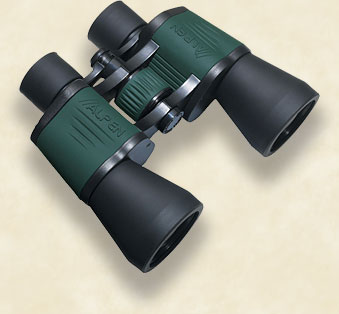Five Tips for Better Birding with Binoculars

To enjoy a day of birding, all you really need are a decent pair of eyeballs and you’re good to go. But your birding enjoyment will be greatly enhanced with a quality pair of binoculars. These marvels of engineering allow the user to span the distance between a bird and themselves, unveiling minute details as if the bird was within arm’s reach. If you’ve invested in a nice pair of binoculars, here are a few tips to get the most out of using them.

Fit Your Binoculars to Your Face
People come in all shapes and sizes, and the distance between a person’s eyes can vary dramatically. The first step in getting a good view out of your binos is to fit them to your head, especially if you’re sharing them with a fellow birder. Raise the binoculars to your eyes and “fold” them into position (almost as if you’re a strongman bending an iron bar) along the center hinge. If the barrels are too close together for your eyes, reverse the move, bending the binoculars upward. As you gaze through the eyepieces, you want the two circular images to converge into one. Fine-tune this adjustment until all you see is a single circular image.

Fine Tune the Focus
Point your binos toward a bright, distant object with some degree of detail. A tree with large leaves or a rooftop television antenna make good stationary targets. Close your right eye (or cover the right barrel with your hand) and slowly turn the central focusing wheel until the image is clear and sharp. Pick out a small detail, like a single leaf or one of the antenna’s prongs, and adjust the focus until it’s as sharp as possible.

Discover the Diopter Ring
 Most quality binoculars come with a diopter adjustment—something many folks aren’t even aware exists. Its purpose is to tweak the focus of a single eyepiece to compensate for any visual discrepancy in the user’s eyes. The diopter adjustment is usually built into the right eyepiece, and often has visible tick marks around its edge. On some models, the diopter ring clicks up into position for adjustment, while on others it simply rotates smoothly. If you can’t find the diopter adjustment, check your owner’s manual for a clue to its hiding place.
Most quality binoculars come with a diopter adjustment—something many folks aren’t even aware exists. Its purpose is to tweak the focus of a single eyepiece to compensate for any visual discrepancy in the user’s eyes. The diopter adjustment is usually built into the right eyepiece, and often has visible tick marks around its edge. On some models, the diopter ring clicks up into position for adjustment, while on others it simply rotates smoothly. If you can’t find the diopter adjustment, check your owner’s manual for a clue to its hiding place.
Once you’ve completed Step 2 and have achieved a sharp image, close your left eye (or cover the left barrel) and use the diopter adjustment to achieve a sharp focus in your right eye. Avoid squinting, which can alter your eyesight. Once you’ve successfully completed this task, simply turning the central focus knob will keep both eyes harmoniously focused.

Zero in on the Target
Now that your binoculars have been calibrated, you’re ready to explore the world around you. But some people find it difficult to actually spot a target in binoculars. Try this technique: Using just your eyes, pick a target and make a mental note of some kind of nearby visual landmark. It might be a uniquely twisted dead branch or a bright clump of leaves. Lock your eyes on the target and bring the binoculars up to your eyes. Adjust the focus, and making small, subtle movements, scan the area for your target. Use the visual landmark you established to help you key in on the object. Practice this technique and you’ll soon be able to snag your targets in no time at all.

Keep the Lenses Spotless and Scratchless
First and foremost, realize that binocular lenses are delicate. Many are treated with coatings to improve their performance. If you discover smudges on your lenses, resist the temptation to grab your shirttail and carelessly wipe them away. A single grain of sand could permanently damage your lenses.
Carefully remove any dust and debris from the lens with a specially-made lens cleaning pen (available at Wild Birds & Gardens). Tip the binoculars upside down as you do this so the debris falls away. Use a can of compressed air to blow away stubborn particles, but do not blow on the lens with your mouth. The moisture in your breath can degrade the lens coatings.
Once the debris has been removed, use specially-made lens tissue or a clean microfiber cloth to carefully wipe any smudges from the lens. Do not use Kleenex, toilet tissue, napkins or paper towels, as they can contain scratch-causing fibers. And do not use Windex or other window-washing fluid, which is far too harsh for delicate lens coatings. If you must use a liquid on a stubborn smudge, use water, preferably distilled water. Lightly dampen a Q-Tip and gently apply it to the smudge, then follow up with a wipe with a cloth. Remember, more binocular damage occurs with overzealous cleaning than anything else.
Your friends at Wild Birds & Gardens are always here to help you get the most out of your binoculars. Stop by the store and get some hands-on coaching from our knowledgeable staff. If you’re shopping for a new pair of binos, come peruse our full line of Alpen Optics. We can help you find a pair that is just right for you and your budget. You’re welcome to try them out for three days, and if they’re not a perfect match, return them, no questions asked.
Follow the tips outlined above and your next birding adventure is sure to be the sharpest ever!

